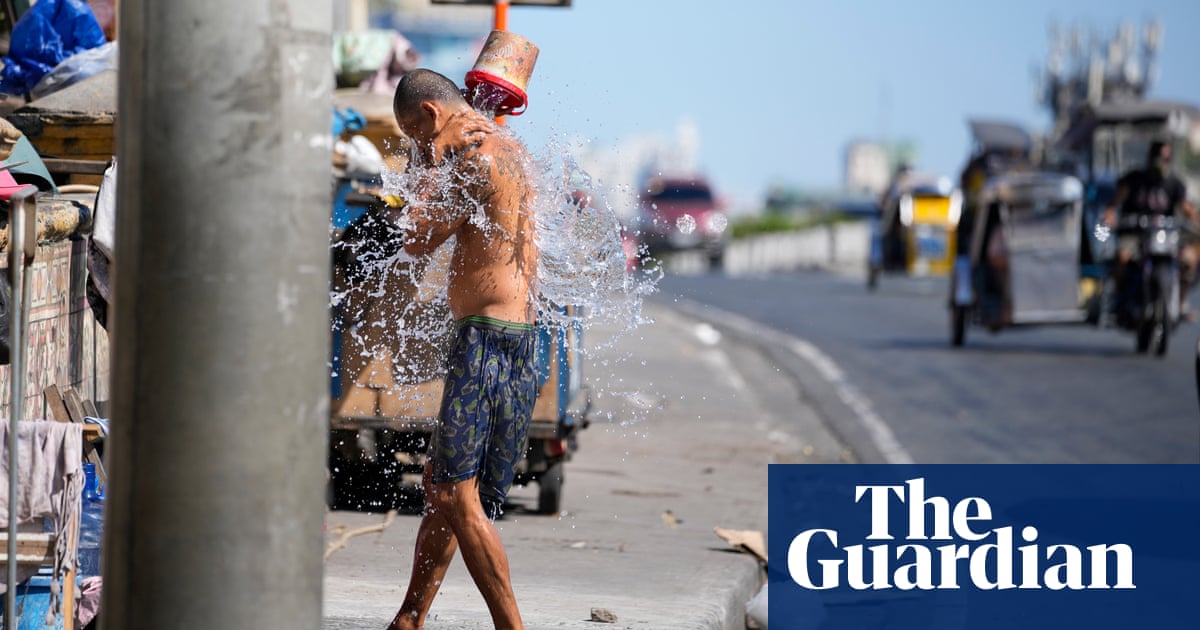
The record-breaking heatwave that scorched the Philippines in April would have been impossible without the climate crisis, scientists have found. Searing heat above 40C (104F) struck across Asia in April, causing deaths, water shortages, crop losses and widespread school closures.
The extreme heat was made 45 times more likely in India and five times more likely in Israel and Palestine, the study found. The scientists said the high temperatures compounded the already dire humanitarian crisis in Gaza, where displaced people are living in overcrowded shelters with little access to water.
The results of the latest study to assess the role of human-caused global heating in worsening extreme weather shows how severe the impacts are already, with only 1.2C of average heating above preindustrial levels over the past four years.
Another “impossible” heatwave hit west Africa and the Sahel in late March, again causing deaths, and reaching 48.5C in Mali. Deaths from extreme heat are poorly recorded in many countries but previous research suggests millions of people have died early over the past two decades. In Europe, where recording is better, heat-related deaths rose by 25% in the past decade.
The scientists warned of worse to come. If global temperature rises to 2C, repeats of April’s extreme heat will be expected every two to three years in the Philippines and every five years in Israel, Palestine and nearby countries. Hundreds of the world’s top climate scientists told the Guardian recently that they expected global inaction in ending fossil fuel burning to result in at least 2.5C of heating.
“From Gaza to Delhi to Manila, people suffered and died when April temperatures soared in Asia,” said Dr Friederike Otto at Imperial College London, part of the World Weather Attribution (WWA) study team. “The additional heat, driven by emissions from oil, gas and coal, is resulting in death for many people.”
Dr Carolina Pereira Marghidan, a heat risk consultant at the Red Cross Red Crescent Climate Centre, said: “The heat really compounded an already dire humanitarian crisis in Gaza, with displaced populations having limited to no access to food, water, healthcare, and generally living in overcrowded shelters which trap heat, or living outdoors.”
The WWA research examined three areas that suffered extreme heat in April. Global heating made temperatures 1.7C hotter in Israel, Palestine, Syria, Lebanon and Jordan, and 1C hotter in the Philippines, where 4,000 schools were closed and portable pools set up to help people cool down. The south Asian region examined encompassed India, where the temperature reached 46C, Bangladesh, Myanmar, Laos, Vietnam, Thailand and Cambodia.
“Climate change is an absolute gamechanger when it comes to extreme heat,” said Otto. The study used weather data and climate models to compare the likelihood of heatwaves in today’s hotter climate and in a climate without human-caused heating. The researchers found that the current El Niño climate cycle, which raises global temperatures, had very little effect on the increased likelihood of the heatwaves.
“Asia contains some of the largest and fastest-growing cities in the world,” said Pereira Marghidan. “This rapid urbanisation has in many cases led to unplanned development, increased concrete across the cities, and extreme losses of green space in many cities.” She said outdoor workers such as farmers and street vendors and those in informal housing were particularly vulnerable and that the study showed the need to improve heatwave early warning and planning programmes.
Hundreds of attribution studies have shown how global heating is already supercharging extreme weather across the world. Dr Mariam Zachariah at Imperial College London, who was part of the study team, said: “Unless the world takes massive, unprecedented steps to reduce emissions and keep warming to 1.5C, extreme heat will lead to even greater suffering in Asia.”












